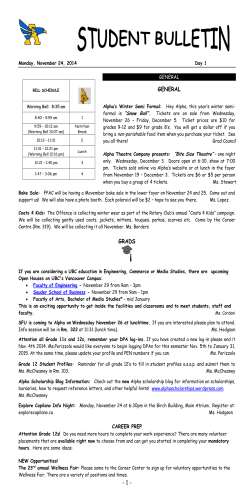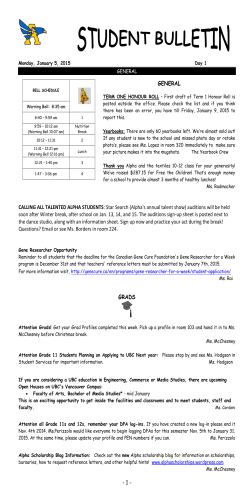
Skip - LabLogic
DOC 413-003 Application note Version 1.0 HIDEX 300 SL OPTIMIZATION OF ALPHA BETA SEPARATION IN 300 SL TDCR LSC Alpha and beta separation is one of the strongest features of Hidex 300 SL liquid scintillation counter. Sample preparation is the first step for achieving good Alpha beta separation. Some of the important factors include: Type of sample: Aqueous or Organic. Organic samples give the best AB separation. Cocktail type : The recommended cocktails are Aqualight for Aqueous samples and Maxilight for Organic samples. Please note that some cocktails are not compatible with alpha beta separation. Water content in the sample: Water increases quench and is one of the most important factors affecting AB. Sample Volume: Optimum sample volume depends on amount of water in the sample, sample preparation & total activity in the sample. Sample Preparation: The acidity of the sample & salt content etc. is influenced by the sample preparation. Variations in acidity or salt concentration can affect quench and alpha beta separation. Sample to cocktail ratio: Generally, the lower the sample to cocktail ratio, the better the alpha beta separation quality. Activity: High beta activity of > 100,000 DPM adversely affects the separation as 2 successive betas could be counted as Alpha pulse. High active samples should be diluted when the activity is high and is adversely affecting the separation. Glass vials: Frosted Glass vials improve alpha beta separation by reducing the amount of internally reflected light from the sample. Note that glass can contain some alpha background. Plastic vials: Optimal ones are Teflon coated plastic vials. In normal plastic vials, slight diffusion of cocktail into plastic wall can cause gradually increasing alpha background. This is due to cosmic particles causing alpha like pulses in cocktail impregnated plastic. Principle of alpha beta separation In Hidex 300 SL the alpha beta separation is based on pulse length index discrimination. A highly useful 2-dimensional graph is produced to analyze and verify the alpha beta separation. The exponential decay of a LSC pulse has 2 decay components. Prompt component, typically < 20 ns Delayed component, typically < 100 ns. Betas have more prompt component & alphas have more delayed component. Because of more delayed component Alphas are said to produce "longer" pulses than betas. For a/b separation, Hidex 300 SL starts to analyze the pulse after "alpha delay time" (default near 40 ns) so that it collects mainly the delayed component. This is much bigger in alpha pulses than in beta pulses. Therefore alphas have greater y-component in the 2D graph. 1(4) DOC 413-003 Application note Version 1.0 HIDEX 300 SL 3D plot of Rn222 with Hidex 300SL 260 250 240 230 220 210 200 190 180 170 160 150 130 Counts 140 120 110 100 90 80 70 60 50 40 30 20 10 0 Alpha emitters 0 48 96 144 192 240 288 336 384 432 480 528 576 624 672 720 768 816 864 912 960 1008 PLI discriminator 26 13 0 PLI MCA Channel Beta emitters Figure 1 shows a 3 dimensional graph of an Rn-222 sample. The Beta emitters are sprad over a wider energy range in the MCA. Alpha peaks are clearly separated due to higher PLI number. Workflow: Alpha delay time followed by Y Gain & PLI should be used for optimization of separation, as visualized in 2 Dimensional Spectrum. The Alpha beta counting should be started with the settings found in factory calibration, they can be found in the instrument Quality Assurance sheet. Alpha Delay Time: Is the Starting time for analyzing delayed component. Increase in Alpha delay time decreases both Alpha & Beta counts, while the ratio between Alphas & Betas is maintained. Y Gain: Shifts the 2D spectrum up or down, clearer optical resolution. Ensure that the entire spectrum is located in the middle. Ensure that the Alpha peak does not touch the top or limiting portion of the Axis. Alpha Tail Offset time: Is used for adjusting the beta band horizontality. To be maintained at 1 or 2. Increasing this would compress the entire spectrum downwards. Ensure that the spectrum is not compressed. ROI: Choose Region of Interest depending on the peaks of choice. Pulse Length Index: Discrimination line in the 2D plot for classification of Alpha pulses from Beta pulses. Choose appropriate PLI depending on the spectrum or depending on Figure of Merit. 2(4) DOC 413-003 Application note Version 1.0 HIDEX 300 SL Alpha Beta Po-218 140 25 Po-214 120 20 100 Pb-214, Bi-214 15 80 10 60 Rn-222 40 5 20 0 0 0 200 400 600 800 0 1000 200 400 600 800 1000 28 24 20 16 12 8 960 0 1008 912 864 816 768 720 672 624 576 528 480 432 384 336 288 240 192 144 96 48 0 4 Figure 2 shows the same Rn-222 sample as in figure 1.The individual beta and alpha spectra are as they appear in the Report Render spectral analysis macro. From the 2-dimensional plot the optimal PLI value can be set at 14. 3(4) DOC 413-003 Application note Version 1.0 HIDEX 300 SL Procedure for Optimizing Pulse Length Index : Count known activity of Alpha emitter and optimize the Counting parameters. With the same counting conditions, count Blank for 60 minutes or more. Alpha CPM Counting Efficiency % Bg CPM FOM ( CE % X CE% / Bg ) PLI 1 PLI 2 PLI 3 PLI 4 etc Choose the PLI which gives max. FOM value. Known activity of beta emitter can be used for Background calculations for a given alpha beta mixture. Note: PMTs & the associated electronics have some time constants so that they don't reproduce the pulse shape absolutely. Because of inherent uncertainty in decay, photon emission, collection etc.. it is difficult to reproduce the same 2D spectrum even for repeat counts. Instrument counting parameters can be optimized for a given type of sample, its volume & type of sample preparation & activity. 4(4)
© Copyright 2026









